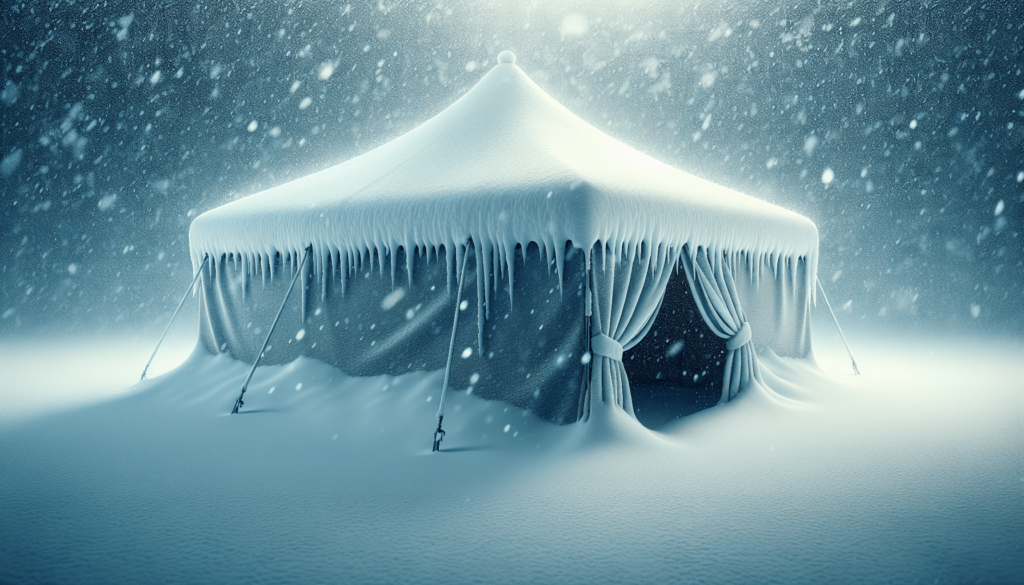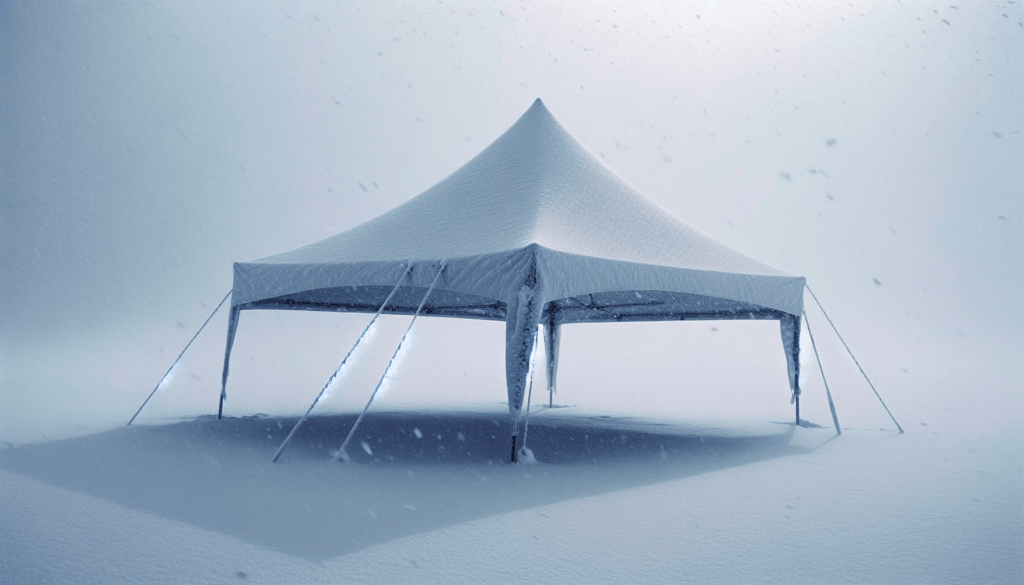Hello there! Have you ever wondered if your canopy tent is strong enough to withstand heavy snowfall? In this article, we will explore the factors that determine if a canopy tent is snow-resistant and provide you with some helpful tips on how to properly protect your tent during wintery weather conditions. So sit back, relax, and let’s find out if your canopy tent is up for the challenge of snowfall!
Can A Canopy Tent Withstand Snowfall?
Have you ever wondered if a canopy tent can withstand heavy snowfall? Whether you’re planning an outdoor event in the winter or looking for a temporary shelter during a snowstorm, it’s essential to know if a canopy tent can hold up against the weight of snow. In this article, we will explore the factors that determine a canopy tent’s ability to withstand snowfall and provide tips on how to choose the right tent for your needs.

Factors That Determine a Canopy Tent’s Snow Load Capacity
Material and Construction
When it comes to withstanding snowfall, the material and construction of a canopy tent are crucial factors to consider. Canopy tents are typically made of either polyester or polyethylene fabric, with steel or aluminum frames.
Polyester is known for its durability and ability to withstand harsh weather conditions, including snowfall. On the other hand, polyethylene is lightweight and less resistant to snow load.
Steel frames are more sturdy and can handle heavier snow loads compared to aluminum frames. However, aluminum frames are lighter and more convenient to transport.
Roof Design
The design of the canopy tent’s roof also plays a significant role in its ability to withstand snowfall. A dome-shaped or peaked roof design allows the snow to slide off easily, reducing the risk of the tent collapsing under the weight of the snow.
Flat-roofed canopy tents are more prone to accumulating snow, which can lead to structural damage or collapse. If you anticipate heavy snowfall, opt for a canopy tent with a sloped roof design to ensure proper snow shedding.
Snow Load Capacity
Every canopy tent comes with a specified snow load capacity, which indicates the maximum weight of snow that the tent can safely support. It is crucial to choose a tent with a snow load capacity that exceeds the average snowfall in your area to prevent any potential dangers.
Before purchasing a canopy tent, check the manufacturer’s specifications for the snow load capacity and make sure it aligns with your local weather conditions. Overloading a tent with snow beyond its capacity can result in structural failure and pose a safety hazard.
Tips for Choosing a Canopy Tent That Can Withstand Snowfall
Determine Your Snow Load Requirements
The first step in choosing a canopy tent that can withstand snowfall is to determine your snow load requirements. Consider the average snowfall in your area and any extreme weather conditions that may occur.
Calculate the total weight of snow that may accumulate on the tent roof and choose a tent with a snow load capacity that exceeds this calculated weight. It’s better to be safe than sorry when it comes to protecting yourself and your guests from the dangers of a collapsed tent.
Invest in a High-Quality Canopy Tent
When it comes to withstanding snowfall, quality matters. Invest in a high-quality canopy tent made of durable materials and sturdy construction. Look for tents with reinforced seams, heavy-duty fabric, and robust frames to ensure they can withstand the weight of snow.
Avoid cheaply made canopy tents that are not designed to withstand harsh weather conditions. While they may be more affordable, they may not provide the necessary protection during a snowstorm.
Consider a Snow-Ready Canopy Tent
Some canopy tents are specifically designed to withstand snowfall and harsh winter conditions. These snow-ready canopy tents feature specialized roof designs, thicker fabric, and reinforced frames to handle heavy snow loads.
If you anticipate frequent snowfall or extreme weather conditions, consider investing in a snow-ready canopy tent for added peace of mind. These tents are built to last through the winter season and provide reliable shelter in any weather.
Clear Snow from the Roof Regularly
To ensure your canopy tent can withstand snowfall, it’s essential to clear snow from the roof regularly. Use a snow rake or broom to remove snow buildup and prevent excessive weight on the tent roof.
Avoid using sharp tools or excessive force when clearing snow from the tent roof, as this can damage the fabric or frame. Be gentle and thorough in removing snow to maintain the integrity of the tent and ensure its longevity.
Monitor Weather Conditions
Stay informed about weather forecasts and monitor snow accumulation on your canopy tent regularly. If a heavy snowstorm is expected, consider reinforcing the tent with additional support or relocating it to a more sheltered area.
It’s essential to be proactive and take preventive measures to protect your canopy tent from the dangers of snowfall. By staying vigilant and prepared, you can ensure the safety and longevity of your tent in winter weather conditions.

Conclusion
In conclusion, a canopy tent can withstand snowfall with the right material, construction, and design. By considering factors such as material, roof design, and snow load capacity, you can choose a canopy tent that is durable and reliable in winter weather conditions.
When selecting a canopy tent for snowfall, prioritize quality, snow load capacity, and maintenance to ensure the safety and longevity of your tent. With proper care and precautions, your canopy tent can provide shelter and protection in any season, including winter.
